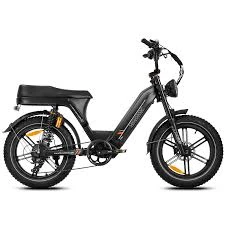
- Afrikaans
- Albanian
- Amharic
- Arabic
- Armenian
- Azerbaijani
- Basque
- Belarusian
- Bengali
- Bosnian
- Bulgarian
- Catalan
- Cebuano
- Corsican
- Croatian
- Czech
- Danish
- Dutch
- English
- Esperanto
- Estonian
- Finnish
- French
- Frisian
- Galician
- Georgian
- German
- Greek
- Gujarati
- Haitian Creole
- hausa
- hawaiian
- Hebrew
- Hindi
- Miao
- Hungarian
- Icelandic
- igbo
- Indonesian
- irish
- Italian
- Japanese
- Javanese
- Kannada
- kazakh
- Khmer
- Rwandese
- Korean
- Kurdish
- Kyrgyz
- Lao
- Latin
- Latvian
- Lithuanian
- Luxembourgish
- Macedonian
- Malgashi
- Malay
- Malayalam
- Maltese
- Maori
- Marathi
- Mongolian
- Myanmar
- Nepali
- Norwegian
- Norwegian
- Occitan
- Pashto
- Persian
- Polish
- Portuguese
- Punjabi
- Romanian
- Russian
- Samoan
- Scottish Gaelic
- Serbian
- Sesotho
- Shona
- Sindhi
- Sinhala
- Slovak
- Slovenian
- Somali
- Spanish
- Sundanese
- Swahili
- Swedish
- Tagalog
- Tajik
- Tamil
- Tatar
- Telugu
- Thai
- Turkish
- Turkmen
- Ukrainian
- Urdu
- Uighur
- Uzbek
- Vietnamese
- Welsh
- Bantu
- Yiddish
- Yoruba
- Zulu
Dec . 27, 2024 09:59 Back to list
how to put a derailleur on a mountain bike
How to Put a Derailleur on a Mountain Bike
Installing a derailleur on a mountain bike can be a challenging yet rewarding task for any cyclist. The derailleur is a crucial component of the bike’s gear system, allowing the rider to shift gears smoothly and effectively. Whether you are replacing a broken derailleur or upgrading to a new one, following the right steps is essential for proper installation. This guide provides a detailed overview of how to install a derailleur on your mountain bike, ensuring that you can tackle any trail with ease.
Tools and Materials Needed
Before you begin the installation process, gather the necessary tools and materials
1. New Derailleur Ensure that the derailleur is compatible with your bike's drivetrain. 2. Screwdriver A Phillips screwdriver is typically used for mounting. 3. Allen Wrenches Various sizes are needed to tighten and adjust bolts. 4. Chain Tool This is useful if you need to remove or reattach the chain. 5. Bicycle Stand This will help to stabilize the bike during installation.
Step-by-Step Installation Process
1. Prepare the Bike Place your mountain bike on a bicycle stand to keep it stable. Shift the chain to the smallest front chainring and the smallest rear cog. This position relieves tension on the derailleur and makes the installation easier.
2. Remove the Old Derailleur (if necessary) If you are replacing an old derailleur, use the appropriate Allen wrench to unscrew it from the derailleur hanger. Carefully detach the chain from the derailleur using a chain tool, and note how the chain is threaded through the derailleur for easier reinstallation.
how to put a derailleur on a mountain bike

3. Mount the New Derailleur Position the new derailleur onto the derailleur hanger. Ensure that it is properly aligned with the chain line. Secure it in place by tightening the mounting bolt with the Allen wrench. Be careful not to overtighten, as this can strip the threads.
4. Reconnect the Chain Thread the chain through the new derailleur according to the configuration you noted earlier. Make sure the chain follows the correct routing through the jockey wheels (pulley wheels) of the derailleur.
5. Adjust the High and Low Limits Most derailleurs come with limit screws that control how far the derailleur can move. To adjust the high limit screw, shift to the smallest rear cog and ensure that the derailleur doesn’t shift beyond this cog. Adjust the screw accordingly. Repeat this process for the low limit screw with the largest rear cog.
6. Set the B-Tension Screws The B-tension screw adjusts the distance between the derailleur’s top pulley and the cogs. It is essential for maintaining proper chain tension and smooth shifting. The ideal distance is typically around 5-6 mm from the top cog.
7. Test the Shifting Shift through all the gears to ensure smooth transitions. Make adjustments as necessary by fine-tuning the limit screws or the indexing on your shifters.
8. Final Adjustments Once shifting is smooth, check the overall alignment and make sure everything is properly tightened. Inspect the chain for any stiffness or improper routing.
Conclusion
Installing a derailleur on a mountain bike is not as daunting as it may seem. With the right tools and a methodical approach, you can successfully complete this DIY project. Proper installation is key to ensuring effective gear shifting, which is crucial for optimal performance on the trails. Always remember to regularly maintain your bike, as this will enhance the longevity and functionality of the derailleur and other components. Happy biking!
-
The Ultimate Kids' Four-Wheeler Experience
NewsJul.09,2025
-
The Ultimate Guide to Mountain Bikes: Gear Up for Your Ride
NewsJul.09,2025
-
The New Age of Cycling: Electric Bikes for Every Rider
NewsJul.09,2025
-
The Best Kids Bicycles: Ride in Style and Safety
NewsJul.09,2025
-
The Best 3-Wheel Scooters for Kids: Fun, Safety, and Adventure
NewsJul.09,2025
-
Revolutionize Your Ride: Affordable Electric Bikes
NewsJul.09,2025
-
Finding the Perfect Mountain Bike for Every Rider
NewsJul.09,2025



